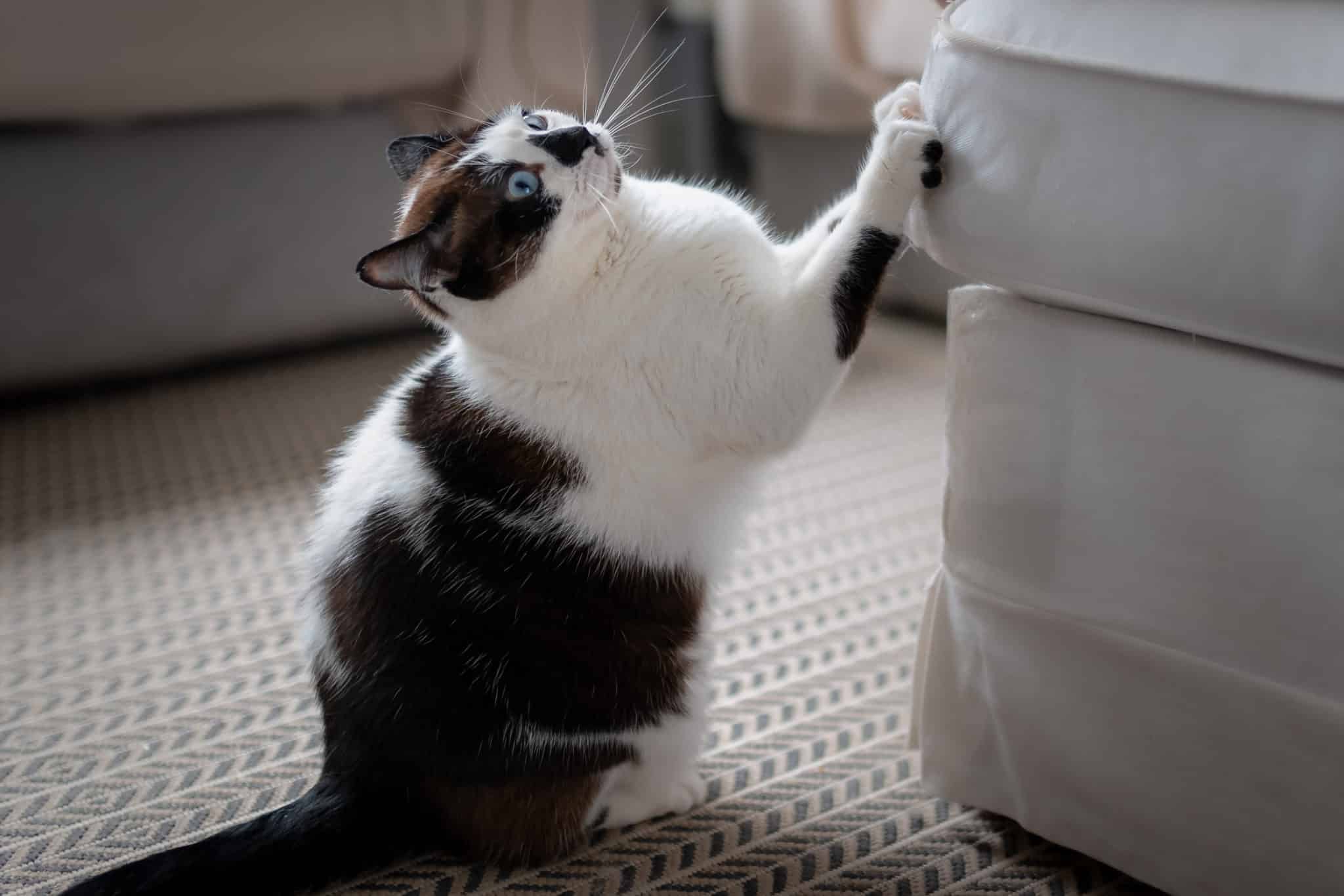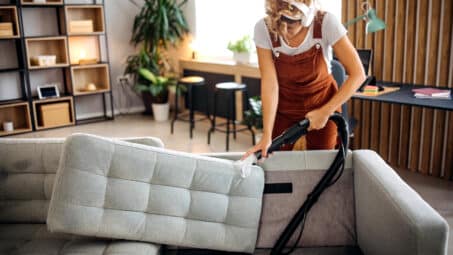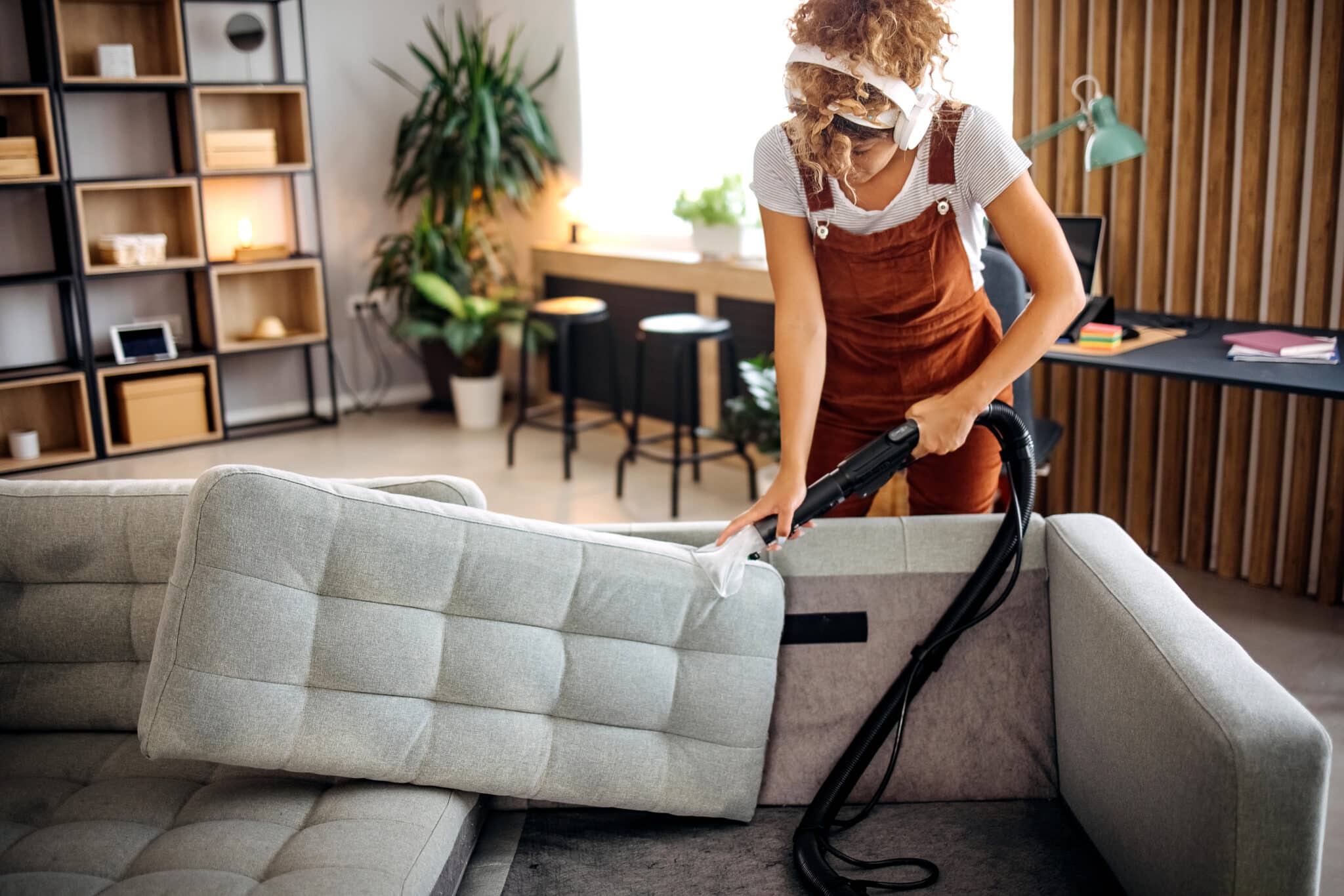Living with your cat means living with a cat scratching furniture. Fortunately, this is normal cat behavior and nothing to worry about. Cats like different textures and they particularly like stretching to reach upright scratching surfaces. So, this is why your couch and chair legs are irresistible to your cat.
The good news is that if you love a cat you don’t have to live with scratched furniture. There are ways to stop scratching and protect the pieces you care about.
Ideally, you should be able to use cat-proofing products as temporary measures to train your cat away from furniture and towards a long-term solution such as a vertical scratching post. This way, you can still provide your cat with all the scratching it needs. Here’s our guide to saving your furniture from your scratching cat.
Why Do Cats Scratch?
Scratching is a natural behavior for cats.
You’ll find cats scratching furniture because:
- Scratches on the furniture are a visual sign to other animals that they already occupy the territory
- Cats have scent glands between their claws and scratching leaves behind their scent and marks the spot as distinctly theirs
- Scratching is the equivalent of a manicure for a cat because it keeps their claws sharp and in good condition
- Scratching helps them to stretch their bodies, which all cats love to do
- Cats sometimes scratch when they’re feeling uneasy as a way of letting you know that something is unsettling them
Effective Ways to Stop Cats Scratching Furniture
The two most humane ways to stop scratching are to:
- Provide a replacement for the cat to scratch instead of your couch or chairs
- Cat-proof your furniture by making it impossible or unpleasant for your cat to scratch indoors
Cat-Proof Your Furniture
These are short-term solutions to stop your cat scratching furniture and protect your pieces from damage:
Clawguard Furniture Protector Shields are pliable, clear sheets that form a barrier between your upholstery and your cat’s claws. They’re made of marine grade vinyl, which maintains its clarity so it doesn’t spoil the look of your furniture.
Clawguard shields are available in four sizes, from small (11 in x 5.5 in.) to extra large (18 in. x 7.5 in.).
To fit the shields:
- Place a shield over the targeted area of upholstery
- Use the provided pins to lock the shield in place
To remove them you simply twist the pin in the opposite direction.
Another simple deterrent solution is Panther Armor Cat Training & Deterrent Tapes. This is transparent, double-sided tape that sticks to a variety of surfaces like couches and table legs. The tape comes in sheets ranging from an eight-pack to a 24-pack
To use, simply stick a sheet over the surface you want to protect. The stickiness will repel the cat, training it not to scratch without upsetting it.
Panther Armor tape is non-toxic and residue-free so it won’t harm your cat or your furniture.
Give Your Cat Something Else to Scratch
Providing your cat with an alternative place to scratch redirects the animal’s natural behavior rather than punishing it, and is a long-term solution to your cat scratching furniture.
While most cats like to scratch vertically, some prefer to scratch horizontally. Depending on your cat’s preference, you can choose a vertical scratching post or a horizontal scratch pad. (And some options even combine the two.)
One scratching post that includes horizontal and vertical options for your kitty is the On2Pets Skyline Scratching Post. It consists of three sisal scratching posts in one tower on a rectangular base. Each of the posts is a different height, ranging from the tallest at 30.5 in. to the shortest at 16.5 in.
This enables your cat to fully stretch out while scratching or to scratch comfortably at a lower post. Artificial turf covers the rectangular base and creates a horizontal scratching alternative to the vertical post. The base also doubles as a cozy spot that could quickly become your cat’s favorite place to hang out.
Prevent Cat Scratching Furniture by Combining Short & Long-Term Solutions
As we’ve seen, cats will always want to scratch. And while cat-proofing measures are not always the best long-term options for house-proud pet owners, that doesn’t need to be a problem.
A combination of short-term solutions and more permanent problem-solving, including positive training techniques, can stop your cat scratching furniture. This way your pet gets what they need and you get to enjoy your scratch-free furniture.






